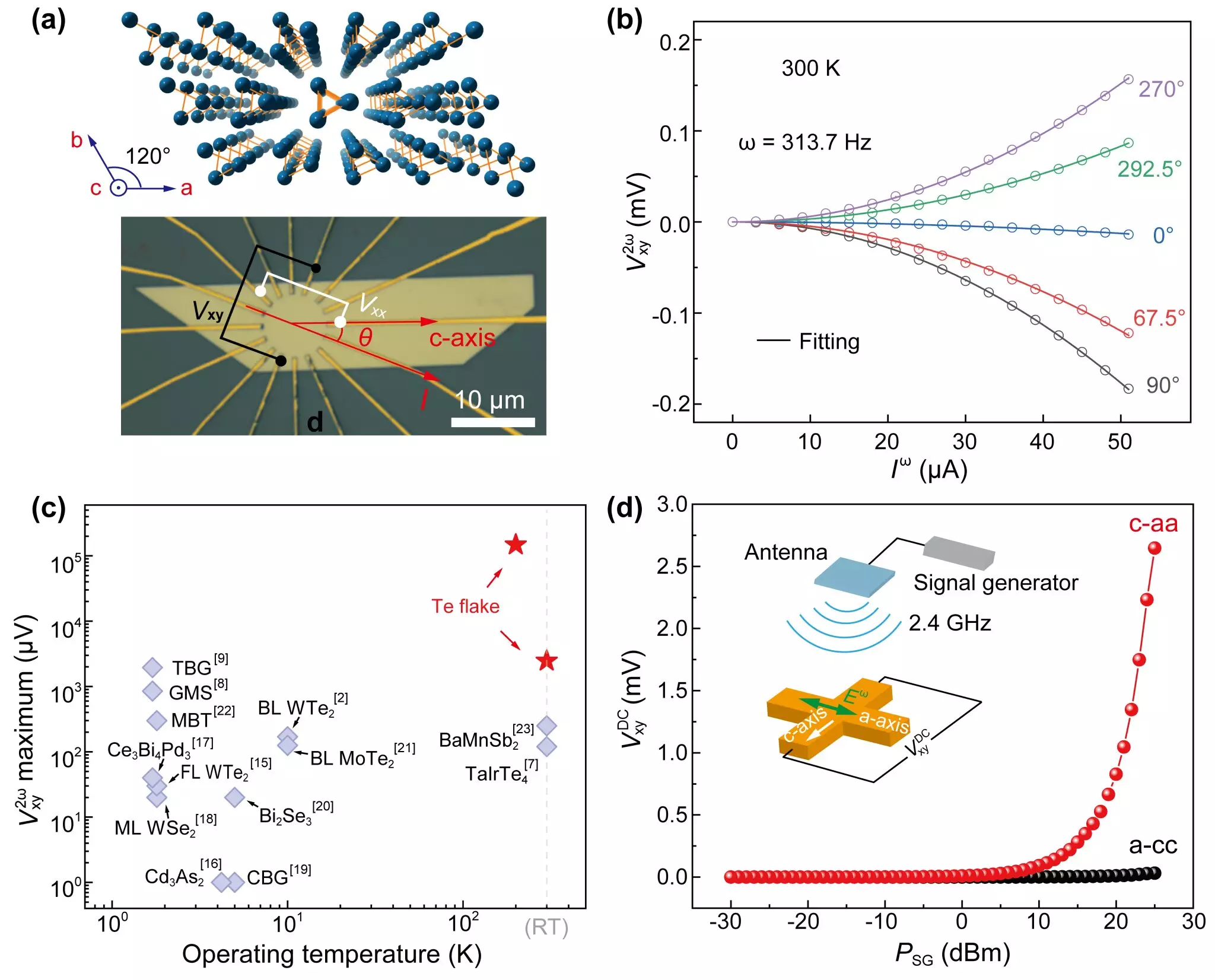Recent advancements in semiconductor research have unveiled promising phenomena within materials that challenge conventional electrical engineering paradigms. Notably, a research team has identified significant nonlinear Hall effect (NLHE) and wireless rectification capacities at room temperature in tellurium (Te), a lesser-known elemental semiconductor. Published in *Nature Communications*, this study not only marks a milestone for Te itself but also sets the stage for future applications in electronic devices that could fundamentally transform how we harness and manage energy.
The nonlinear Hall effect represents a second-order response to applied alternating current (AC). Unlike traditional Hall effects that require external magnetic fields to generate a transverse voltage, NLHE can yield second-harmonic signals simply through the application of AC. This feature makes NLHE highly intriguing for potential integration into frequency-doubling devices and rectification systems. Nonetheless, prior explorations into NLHE have been stymied by limitations, including low output voltages and operational inefficiencies at practical temperatures. Previous work showcased NLHE in specific semimetals, including BaMnSb2 and TaIrTe4, but these findings were marred by insufficient voltage outputs and limited tunability.
To overcome these challenges, the research team, led by Prof. Zeng Changgan and Associate Researcher Li Lin from the University of Science and Technology of China (USTC), directed their focus toward tellurium. Te’s unique one-dimensional atomic helical chain structure endows it with the property of inherent asymmetry, thus inviting inquiry as a candidate for exhibiting exceptional NLHE. This decision proved fruitful as they managed to record a considerable NLHE in Te thin flakes at room temperature, achieving an impressive maximum second-harmonic voltage output of 2.8 mV—a substantial enhancement over previous records.
In the course of their analysis, the researchers established that extrinsic scattering predominantly drives the observed NLHE in tellurium. Moreover, the surface symmetry breaking associated with the thin flake structure was identified as a critical factor enhancing the nonlinear effect. Such insights are vital not only for theoretical understanding but also for guiding further investigations into how material structure influences electronic properties.
Building upon their successes with the nonlinear Hall effect, the team advanced to demonstrating wireless radiofrequency (RF) rectification in tellurium. By utilizing this semiconductor’s inherent characteristics, they achieved a stable rectified voltage output over a broad frequency spectrum ranging from 0.3 GHz to 4.5 GHz. This approach circumvents traditional rectification methods reliant on p-n junctions. As a result, Te-based Hall rectifiers create a robust option for the evolution of energy harvesting and wireless charging technologies.
In essence, the study of the nonlinear Hall effect in tellurium not only enriches our scientific understanding of nonlinear transport phenomena but also illuminates a pathway for the development of advanced electronic devices. As these findings pave the way for more efficient energy conversion technologies, they could potentially redefine the landscape of electronic device functionality in both consumer electronics and electric vehicles. The ripple effects of this research may very well extend into diverse fields, suggesting that tellurium’s capabilities exceed far beyond historical applications, promising a future ripe with innovative possibilities.

